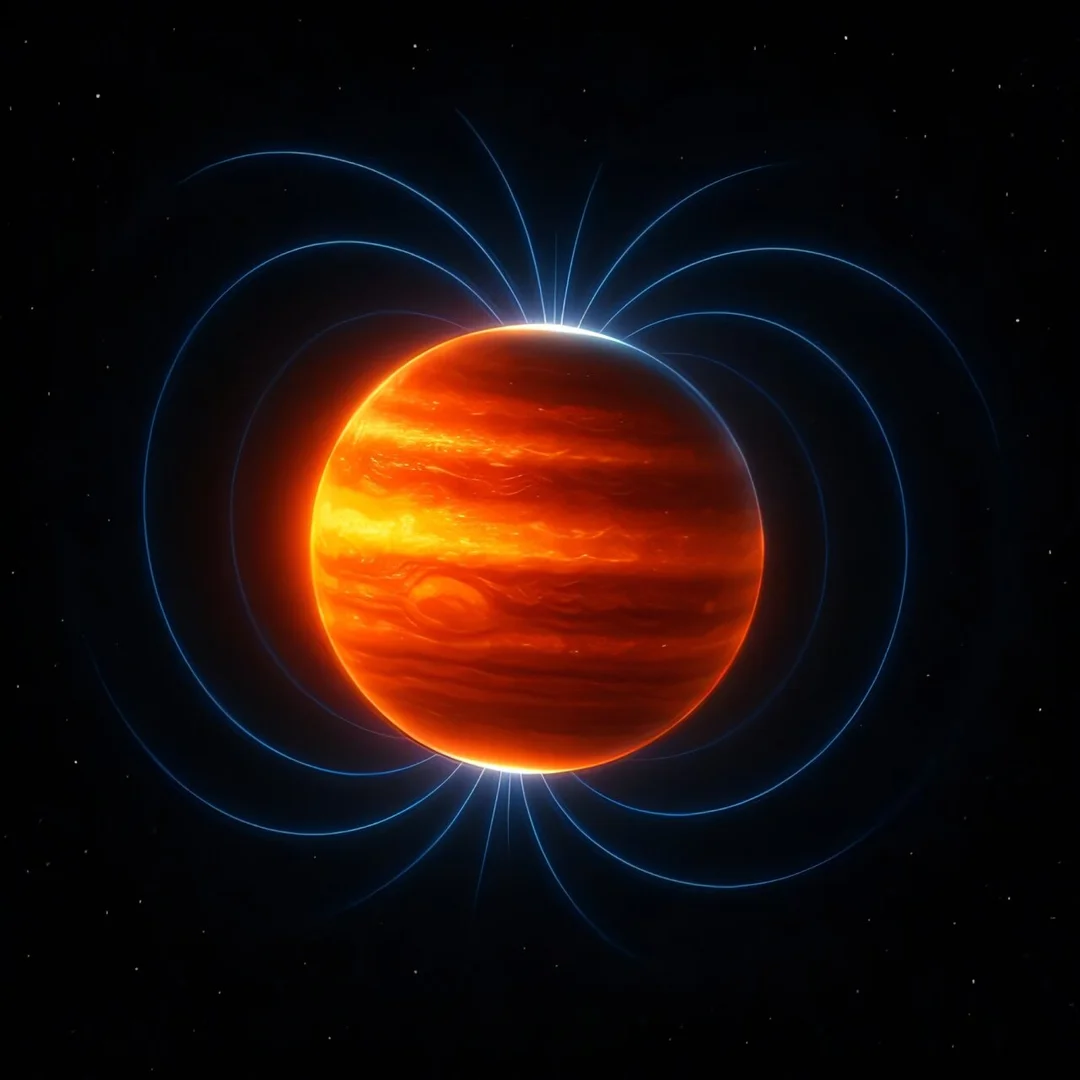
Early Jupiter: A Bloated Giant with an Immense Magnetic Field Revealed
In the infancy of our solar system, Jupiter wasn't the colossal gas giant we recognize today. New research suggests it was a much larger, more tempestuous sphere, boasting a magnetic field 50 times stronger than its current state. This revelation, drawn from the orbits of Jupiter's inner moons, offers a rare glimpse into the planet's formative years.

The study, led by Konstantin Batygin of Caltech and Fred Adams of the University of Michigan, reconstructs Jupiter's physical state a mere 3.8 million years after the formation of the first solid particles in the solar system. This epoch, known as the "end of the protoplanetary disk," marked a period of dramatic transformation for Jupiter. "Our ultimate goal is to understand where we come from," says Batygin, emphasizing the importance of understanding these early phases.
According to the research, early Jupiter's radius was between 2.0 and 2.5 times its current size, large enough to contain over 2,000 Earths by volume. This immense size sheds light on the planet's formation process, offering crucial data points in the ongoing puzzle of planetary evolution. The key to unlocking this ancient past lies in the orbits of Jupiter's tiny inner moons, Amalthea and Thebe.

These moons, orbiting closer than Io, possess slightly tilted orbits, a consequence of ancient forces. During the solar system's early years, Jupiter's larger moons migrated outward due to tidal forces. As Io moved, it interacted gravitationally with Amalthea and Thebe, leaving behind the small orbital tilts that persist to this day. These inclinations served as an "archaeological tool," allowing the team to model the resonances and infer Jupiter’s size in its infancy.
"It's astonishing that even after 4.5 billion years, enough clues remain to let us reconstruct Jupiter's physical state at the dawn of its existence," notes Adams. He and Batygin didn't stop there. They also factored in Jupiter's angular momentum, akin to a figure skater pulling in her arms to spin faster. As Jupiter shrank, its spin accelerated. By calculating its original spin, the researchers could further refine their estimates of its initial size and internal structure. This spin also hinted at the strength of its early magnetic field. The team estimating that Jupiter’s magnetic field strength was about 21 millitesla — around 50 times stronger than today.
The team's findings align with a 2023 study of meteorite magnetism, which dated the solar nebula's dissipation to 3.8 million years after the first solids formed. Both studies converge on this timescale, strengthening the validity of the new model. This research adds weight to the dominant core accretion model of gas giant formation, providing actual physical characteristics like size and magnetism at a key evolutionary checkpoint.
Furthermore, it contributes to the debate between "hot start" and "cold start" planetary formation theories, suggesting that Jupiter experienced a "warm start," striking a balance between the competing frameworks. This discovery offers a valuable benchmark for understanding our solar system's evolution.
What does this discovery mean for our understanding of planetary formation in other systems? Share your thoughts in the comments below!